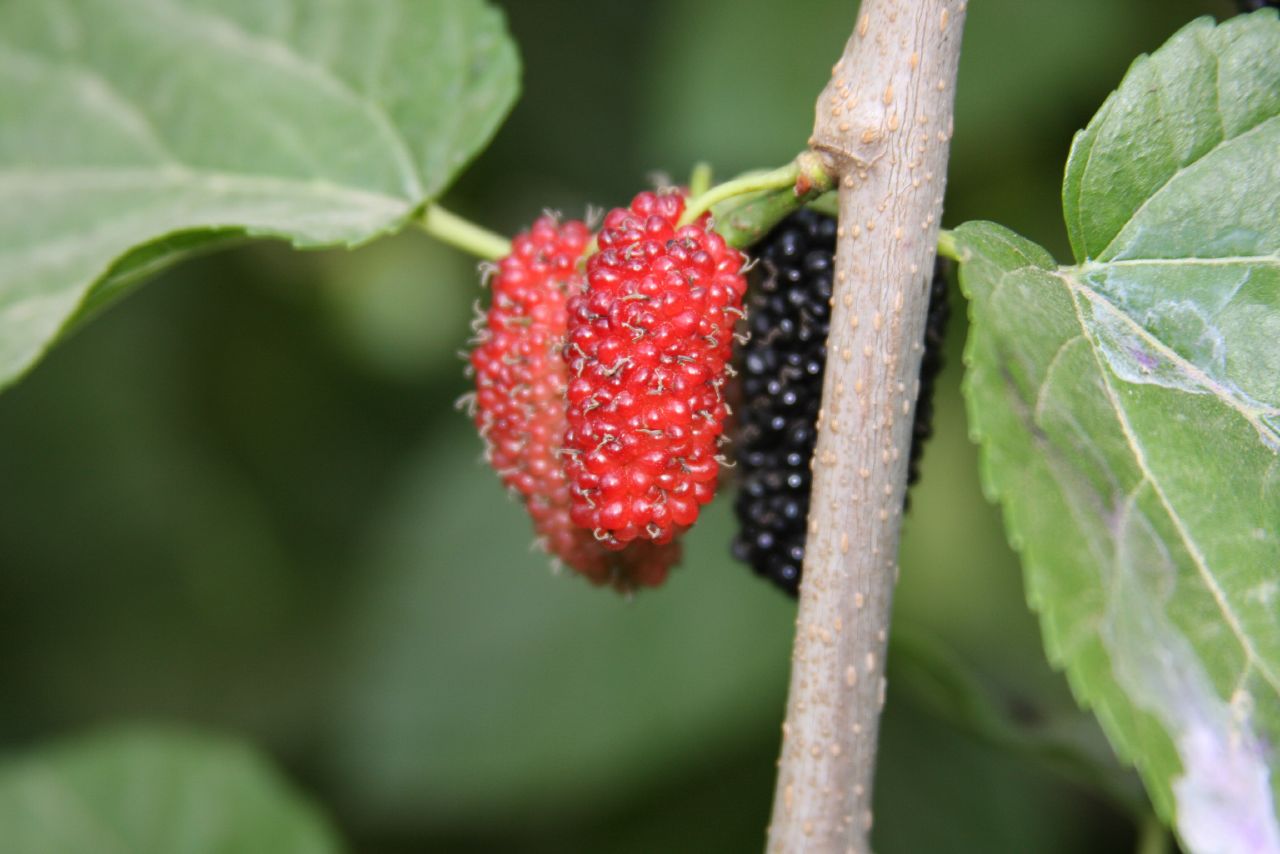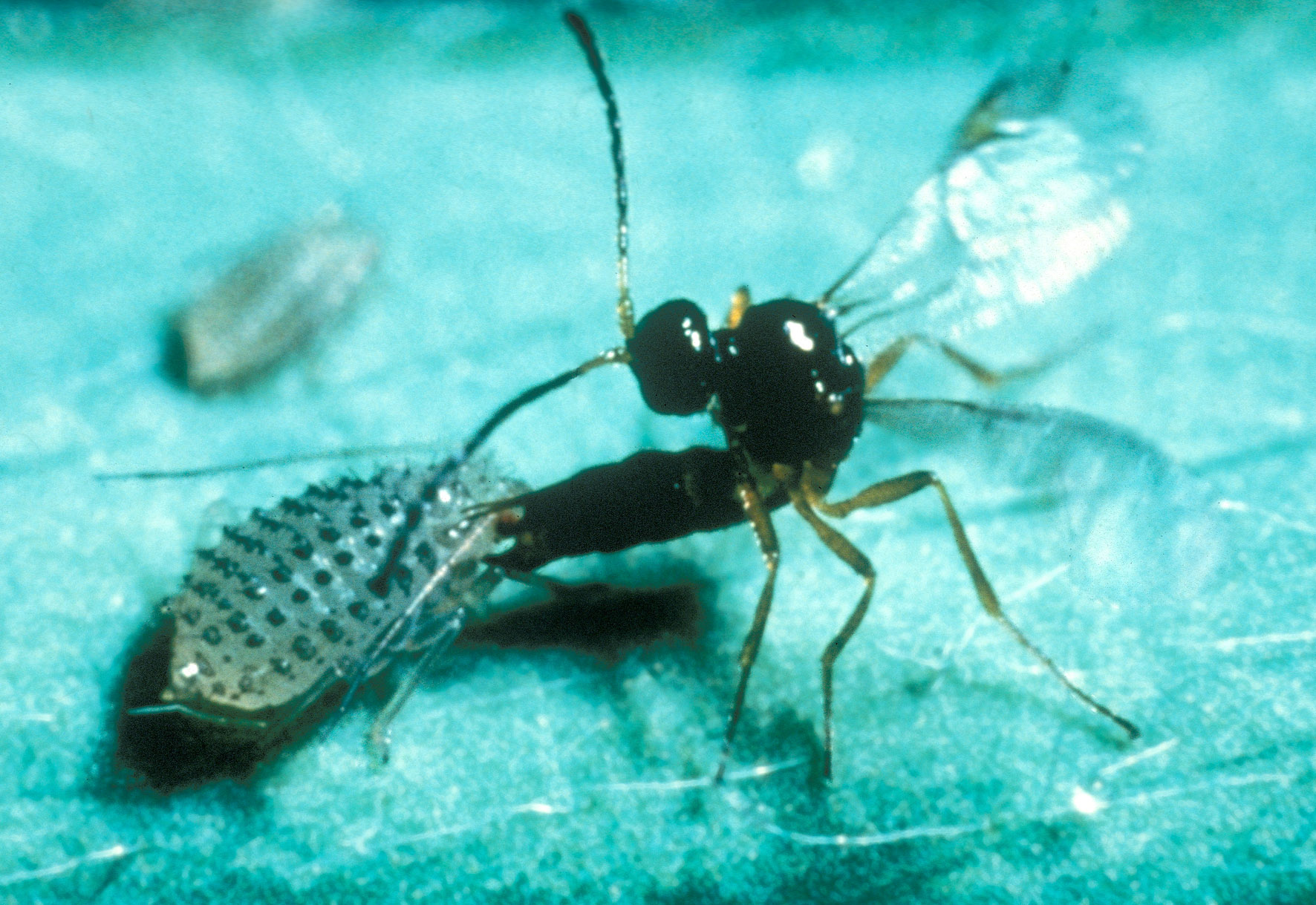|
Pseudococcus Comstocki
''Pseudococcus comstocki'', common name Comstock mealybug, is a species of mealybug. The species was first discovered in 1902 in Japan. It is an invasive pest species that feeds on fruit and plants. Description Adult female Comstock mealybugs are long, have no wings, and have "17 pairs of filaments" that extend from the edge of its body with a longer pair at the rear. The adult males are minuscule, similar to the size of gnats, and have a short life span. The larvae resemble female adults except for "being smaller with less wax and no long filaments". Its eggs are long orange ovals that are clumped together on twigs, cuts on trees, and on fruit during the summer. During autumn, the egg clusters are laid in bark crevices. Each mass of eggs is referred to as an ovisac or a nest and it is coated with white filaments that resemble cotton. Feeding and control The species use "piercing-sucking mouthparts" to create honeydew that causes mold, that is the color of soot, to grow on fru ... [...More Info...] [...Related Items...] OR: [Wikipedia] [Google] [Baidu] |
Mealybug
Mealybugs are insects in the family Pseudococcidae, unarmored scale insects found in moist, warm habitats. Many species are considered pests as they feed on plant juices of greenhouse plants, house plants and subtropical trees and also act as a vector for several plant diseases. Some ants live in symbiotic relationships with them, protecting them from predators and feeding off the honeydew which they excrete. Description Mealybugs are sexually dimorphic: females appear as nymphs, exhibiting reduced morphology, and lack wings, although unlike many female scale insects, they often retain legs and can move. Males are smaller, gnat-like and have wings. Since mealybugs (as well as all other Hemiptera) are hemimetabolous insects, they do not undergo complete metamorphosis in the true sense of the word. However, male mealybugs do exhibit a radical change during their life cycle, changing from wingless, ovoid nymphs to wasp-like flying adults. Mealybug females feed on plant sap, nor ... [...More Info...] [...Related Items...] OR: [Wikipedia] [Google] [Baidu] |
Allotropa Burrelli
''Allotropa virgata'' is in the family Ericaceae and is the only species of the genus ''Allotropa''. It is a perennial plant that gets its common names from the distinct white and red or maroon stripes along its erect peduncle. ''A. virgata'' are nongreen as they lack chlorophyll, instead obtaining nutrition from neighboring green plants through a fungal intermediate. Its common names include sugarstick, candystriped allotropa and barber's pole. Range ''Allotropa virgata'' was first collected by the Wilkes Expedition in the Cascade Mountains of Washington in the late 1800s. It is found in the oak, coniferous and hardwood forests of the Pacific Northwest. It grows from 75 to 3000 meters in elevation in the High Sierra Nevada, High Cascade Range and up through British Columbia. There is also suitable habitat in Idaho, Nevada, and Montana. Ecology ''Allotropa virgata'' feeds primarily on matsutake mushroom (''Tricholoma matsutake'') mycelium, and also possibly that of the si ... [...More Info...] [...Related Items...] OR: [Wikipedia] [Google] [Baidu] |
Sternorrhyncha
The Sternorrhyncha suborder of the Hemiptera contains the aphids, whiteflies, and scale insects, groups which were traditionally included in the now-obsolete order "Homoptera". "Sternorrhyncha" refers to the rearward position of the mouthparts relative to the head. Distributed worldwide, all members of this group are plant-feeders, many considered pests feeding on major crops and ornamental plants. Many exhibit modified morphology and/or life cycles, including phenomena such as flightless morphs, parthenogenesis, sexual dimorphism, and eusociality. Phylogeny The phylogeny of the extant Sternorrhyncha, inferred from analysis of small subunit (18S) ribosomal RNA, is shown in the cladogram. The evolutionary position of several fossil taxa are unclear. A suggested phylogeny is: Groups Well-known groups in the Sternorrhyncha include: * aphids – (Aphididae) * woolly and gall-making aphids ( Eriosomatinae) * pine and spruce aphids ( Adelgidae) * phylloxerans ( Phylloxerida ... [...More Info...] [...Related Items...] OR: [Wikipedia] [Google] [Baidu] |
Maple
''Acer'' () is a genus of trees and shrubs commonly known as maples. The genus is placed in the family Sapindaceae.Stevens, P. F. (2001 onwards). Angiosperm Phylogeny Website. Version 9, June 2008 nd more or less continuously updated since http://www.mobot.org/MOBOT/research/APweb/. There are approximately 132 species, most of which are native to Asia, with a number also appearing in Europe, northern Africa, and North America. Only one species, '' Acer laurinum'', extends to the Southern Hemisphere.Gibbs, D. & Chen, Y. (2009The Red List of Maples Botanic Gardens Conservation International (BGCI) The type species of the genus is the sycamore maple, '' Acer pseudoplatanus'', the most common maple species in Europe.van Gelderen, C. J. & van Gelderen, D. M. (1999). ''Maples for Gardens: A Color Encyclopedia'' Maples usually have easily recognizable palmate leaves ('' Acer negundo'' is an exception) and distinctive winged fruits. The closest relatives of the maples are the hor ... [...More Info...] [...Related Items...] OR: [Wikipedia] [Google] [Baidu] |
Morus (plant)
''Morus'', a genus of flowering plants in the family Moraceae, consists of diverse species of deciduous trees commonly known as mulberries, growing wild and under cultivation in many temperate world regions. Generally, the genus has 64 identified species, three of which are well-known and are ostensibly named for the fruit color of the best-known cultivar: white, red, and black mulberry (''Morus alba'', '' M. rubra'', and '' M. nigra'', respectively), with numerous cultivars. ''M. alba'' is native to South Asia, but is widely distributed across Europe, Southern Africa, South America, and North America. ''M. alba'' is also the species most preferred by the silkworm, and is regarded as an invasive species in Brazil and the United States. The closely related genus '' Broussonetia'' is also commonly known as mulberry, notably the paper mulberry (''Broussonetia papyrifera''). Description Mulberries are fast-growing when young, and can grow to tall. The leaves ... [...More Info...] [...Related Items...] OR: [Wikipedia] [Google] [Baidu] |
Shinkai Inokichi Kuwana
Shinkai may refer to: * DSV Shinkai, research submersible * ''Shinkai'' (album) * Shinkai railway station, Pakistan People with the given name or surname Shinkai include: * Makoto Shinkai , known as , is a Japanese animator, filmmaker, author, and manga artist. Shinkai began his career as a video game animator with Nihon Falcom in 1996, and gained recognition as a filmmaker with the release of the original video animation (OVA) ' ... (born 1973), Japanese animator, filmmaker and manga artist * Seiji Shinkai (born 1944), Japanese chemist and professor * Shinkai Karokhail (born 1962), Afghan politician and rights activist See also * Xinkai (other) {{disambiguation, surname ... [...More Info...] [...Related Items...] OR: [Wikipedia] [Google] [Baidu] |
Sex Pheromone
Sex pheromones are pheromones released by an organism to attract an individual of the same species, encourage them to mate with them, or perform some other function closely related with sexual reproduction. Sex pheromones specifically focus on indicating females for breeding, attracting the opposite sex, and conveying information on species, age, sex and genotype. Non-volatile pheromones, or cuticular contact pheromones, are more closely related to social insects as they are usually detected by direct contact with chemoreceptors on the antennae or feet of insects. Insect sex pheromones have found uses in monitoring and trapping of pest insects. Evolution Sex pheromones have evolved in many species. The many types of pheromones (i.e. alarm, aggregation, defense, sexual attraction) all have a common cause acting as chemical cues to trigger a response. However, sex pheromones are particularly associated with signaling mating behaviors or dominance. The odors released can be seen as ... [...More Info...] [...Related Items...] OR: [Wikipedia] [Google] [Baidu] |
Allotropa Convexifrons
''Allotropa virgata'' is in the family Ericaceae and is the only species of the genus ''Allotropa''. It is a perennial plant that gets its common names from the distinct white and red or maroon stripes along its erect peduncle. ''A. virgata'' are nongreen as they lack chlorophyll, instead obtaining nutrition from neighboring green plants through a fungal intermediate. Its common names include sugarstick, candystriped allotropa and barber's pole. Range ''Allotropa virgata'' was first collected by the Wilkes Expedition in the Cascade Mountains of Washington in the late 1800s. It is found in the oak, coniferous and hardwood forests of the Pacific Northwest. It grows from 75 to 3000 meters in elevation in the High Sierra Nevada, High Cascade Range and up through British Columbia. There is also suitable habitat in Idaho, Nevada, and Montana. Ecology ''Allotropa virgata'' feeds primarily on matsutake mushroom (''Tricholoma matsutake'') mycelium, and also possibly that of the si ... [...More Info...] [...Related Items...] OR: [Wikipedia] [Google] [Baidu] |
Larva
A larva (; plural larvae ) is a distinct juvenile form many animals undergo before metamorphosis into adults. Animals with indirect development such as insects, amphibians, or cnidarians typically have a larval phase of their life cycle. The larva's appearance is generally very different from the adult form (''e.g.'' caterpillars and butterflies) including different unique structures and organs that do not occur in the adult form. Their diet may also be considerably different. Larvae are frequently adapted to different environments than adults. For example, some larvae such as tadpoles live almost exclusively in aquatic environments, but can live outside water as adult frogs. By living in a distinct environment, larvae may be given shelter from predators and reduce competition for resources with the adult population. Animals in the larval stage will consume food to fuel their transition into the adult form. In some organisms like polychaetes and barnacles, adults are im ... [...More Info...] [...Related Items...] OR: [Wikipedia] [Google] [Baidu] |
Parasitoid
In evolutionary ecology, a parasitoid is an organism that lives in close association with its host (biology), host at the host's expense, eventually resulting in the death of the host. Parasitoidism is one of six major evolutionarily stable strategy, evolutionary strategies within parasitism, distinguished by the fatal prognosis for the host, which makes the strategy close to predation. Among parasitoids, strategies range from living inside the host (''endoparasitism''), allowing it to continue growing before emerging as an adult, to Paralysis, paralysing the host and living outside it (''ectoparasitism''). Hosts can include other parasitoids, resulting in hyperparasitism; in the case of oak galls, up to five levels of parasitism are possible. Some parasitoids Behavior-altering parasite, influence their host's behaviour in ways that favour the propagation of the parasitoid. Parasitoids are found in a variety of Taxon, taxa across the insect superorder Endopterygota, whose compl ... [...More Info...] [...Related Items...] OR: [Wikipedia] [Google] [Baidu] |





